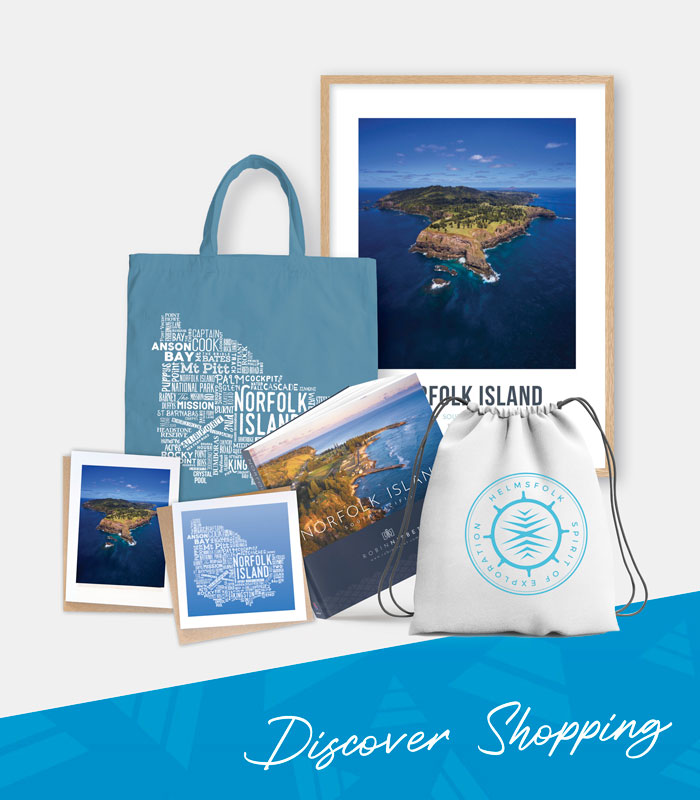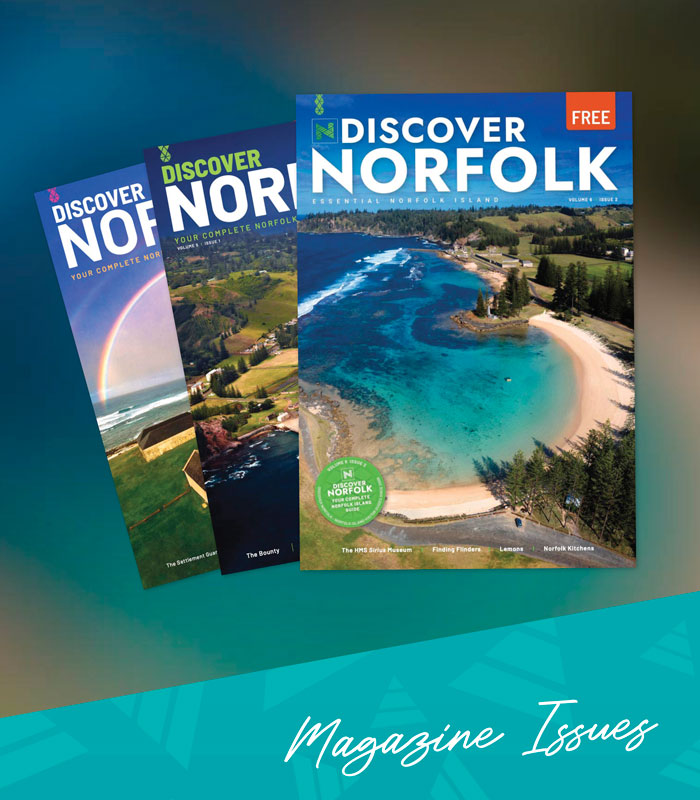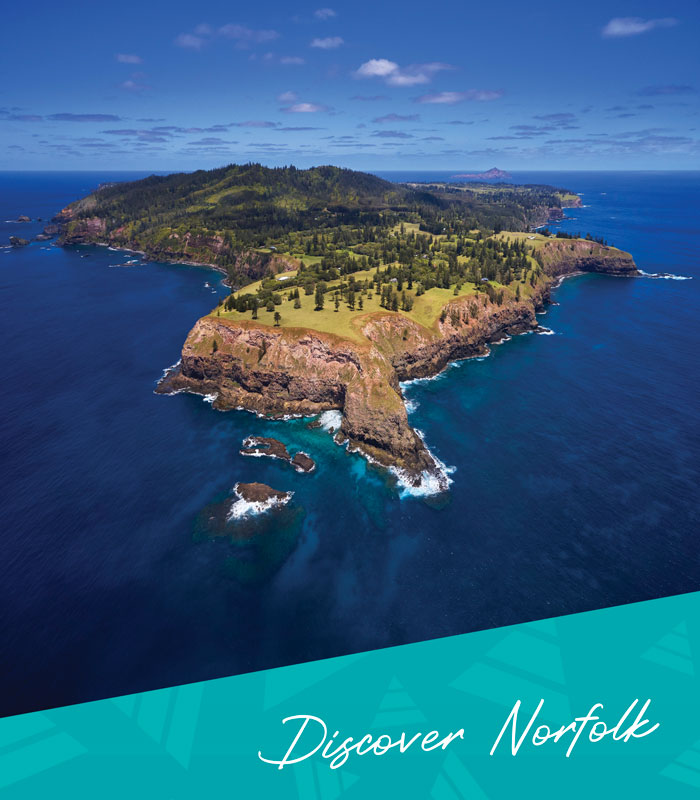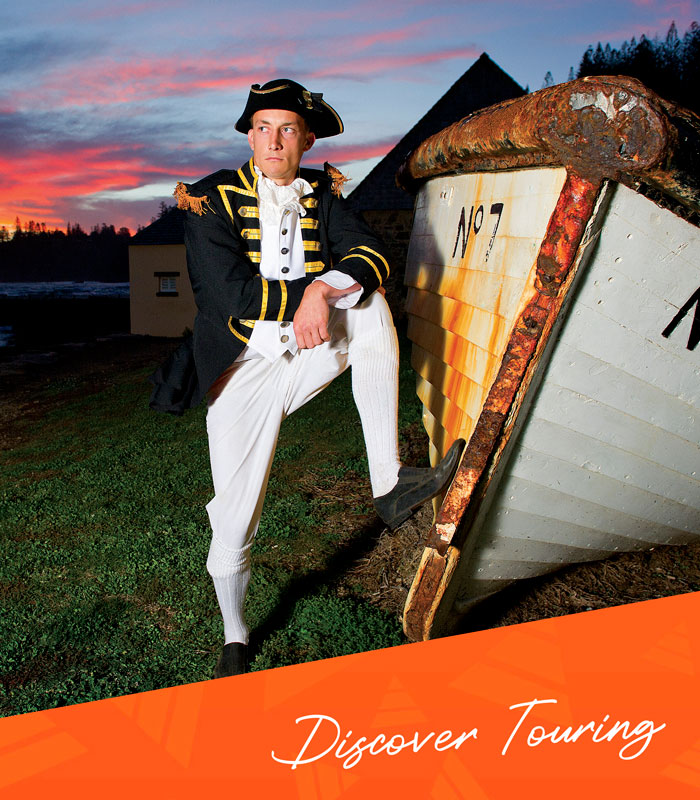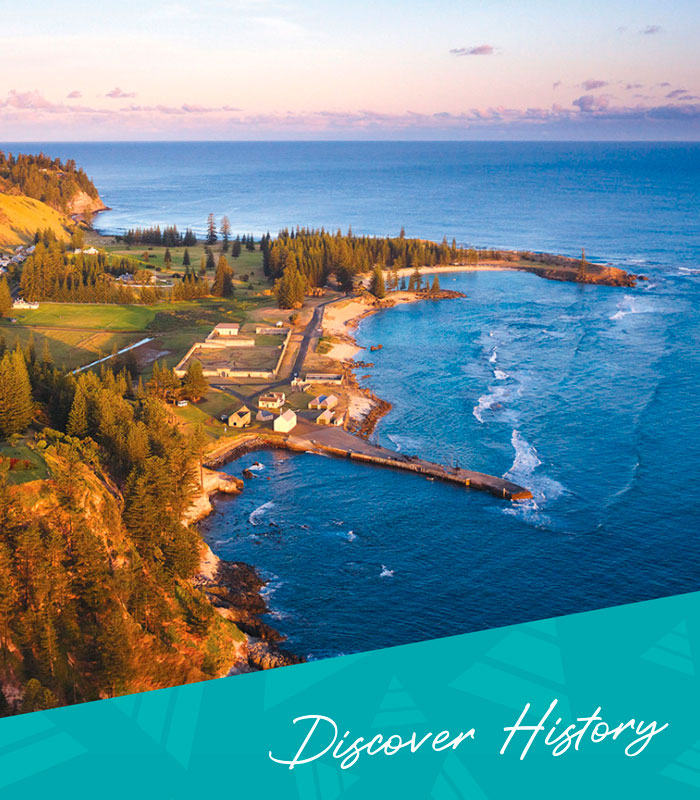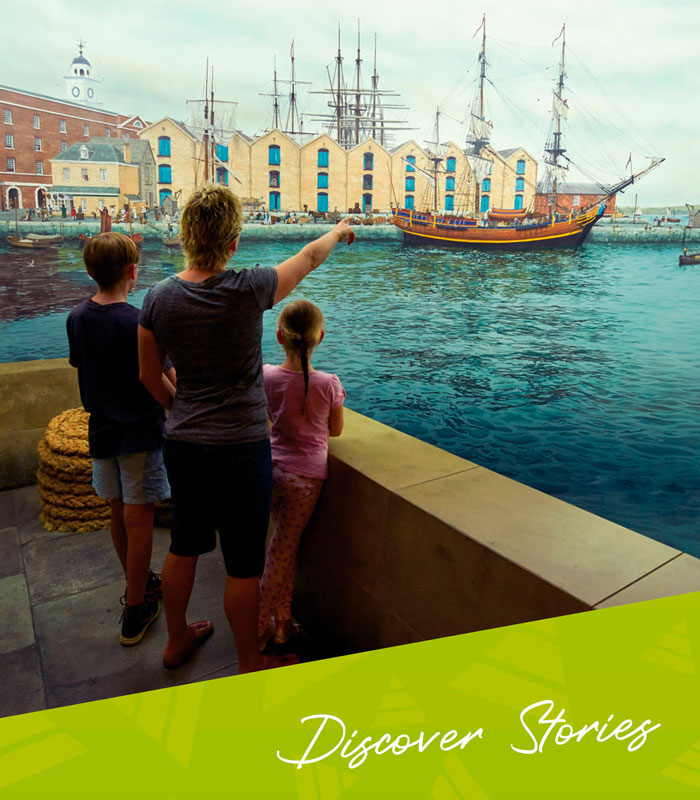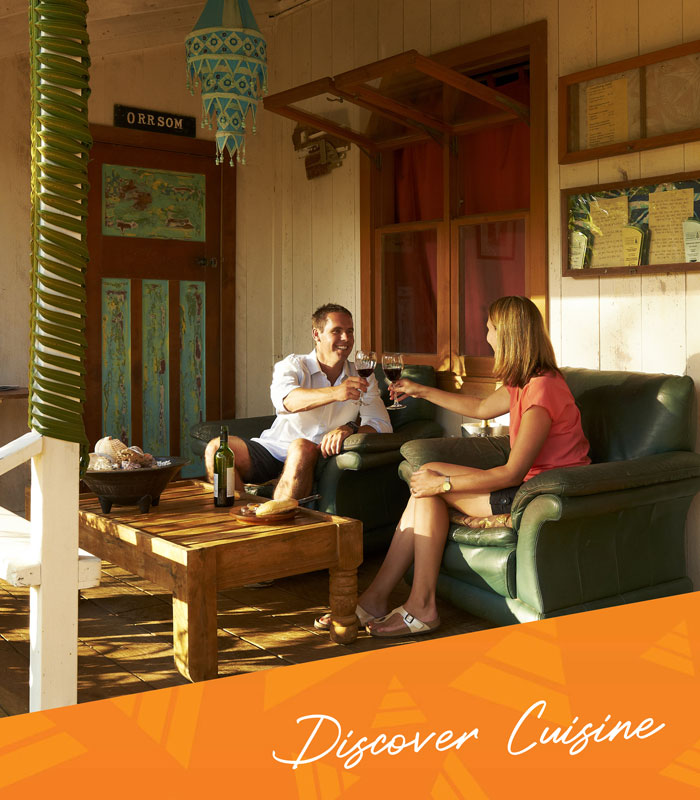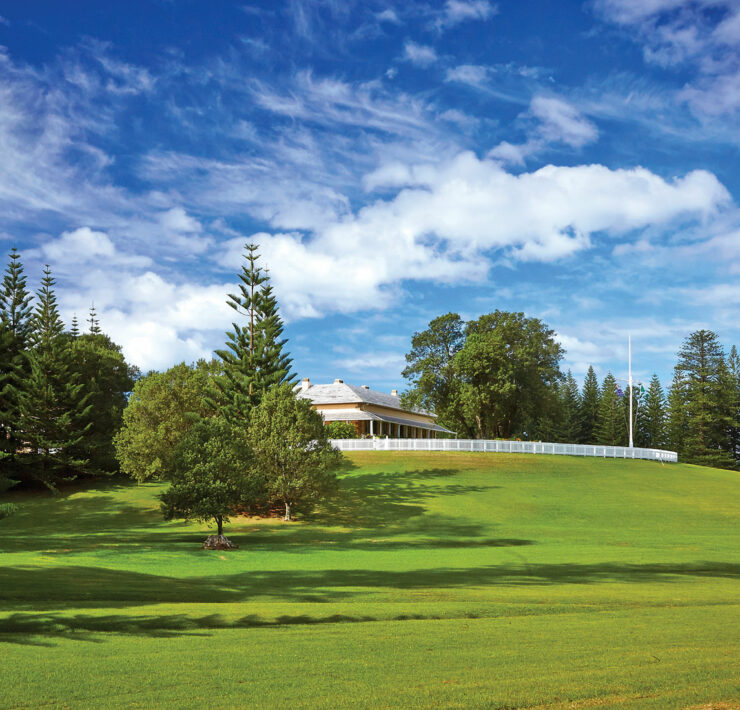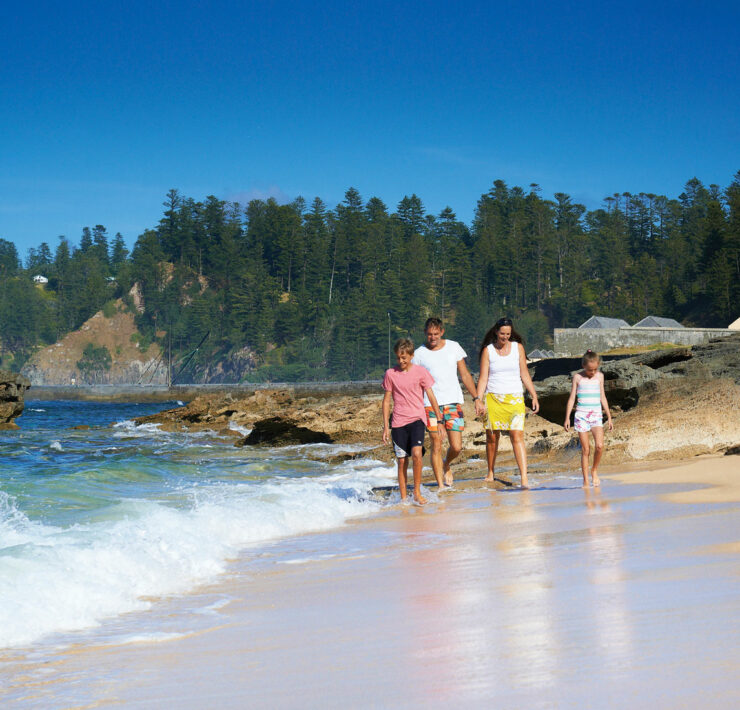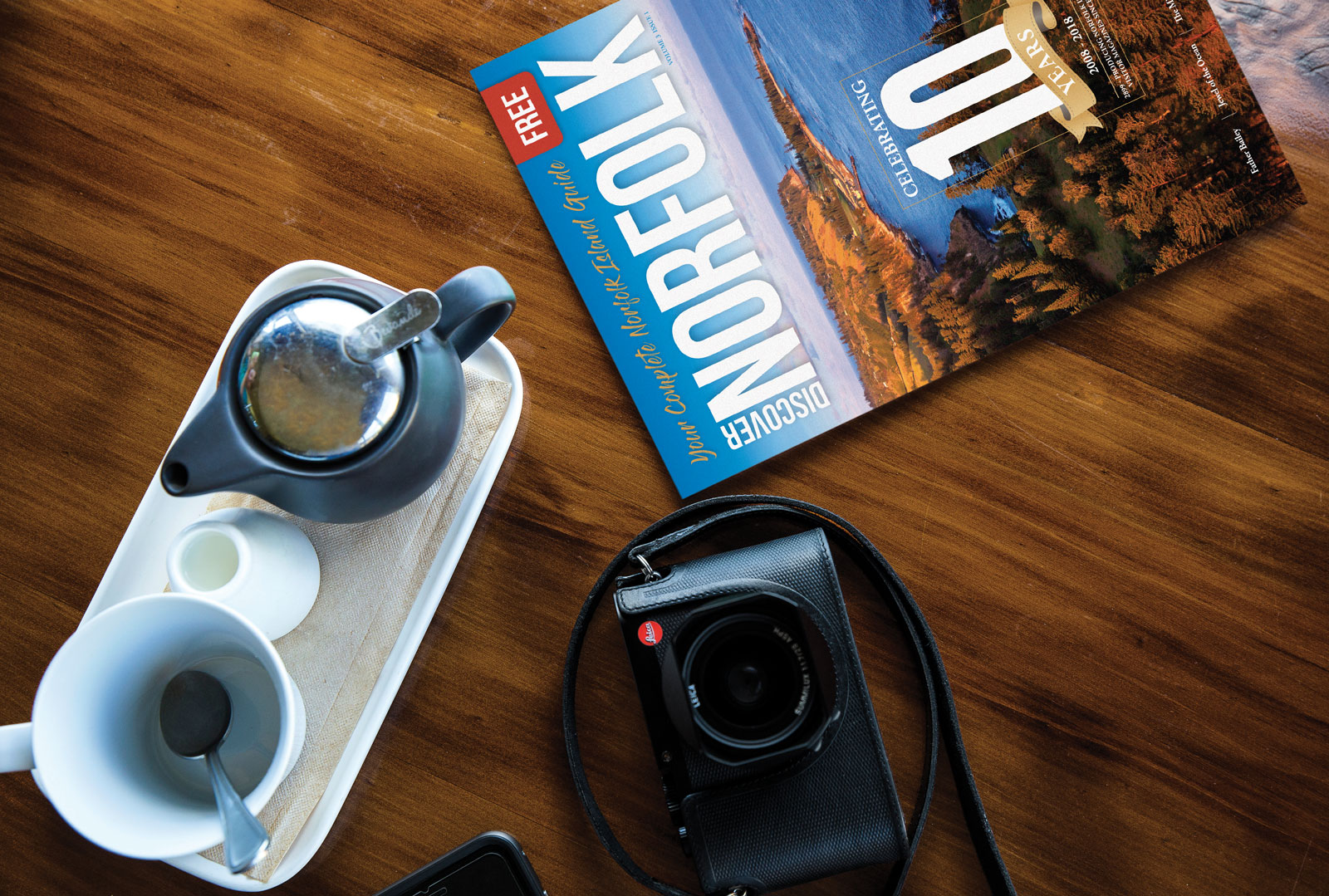Home » All Articles » In Safe Hands The HMS Sirius rehousing project
In Safe Hands The HMS Sirius rehousing project

It would be any museum curator’s nightmare: an 18th century 1.7 ton anchor hanging mid-air, half in half out of the doorway of a World Heritage listed building. The anchor head is wider than the doorway it has to travel through, which is almost a third smaller than the average door size. The stakes at risk are increased by the fact that the 5 metre long anchor is a major artefact from Australia’s most important shipwreck collection. Following its removal through that historic, yet inadequate doorway, will be several hundred other objects including carronades, massive ballast blocks and fragile scientific instruments.
The objects are from HMS Sirius, flagship of the First Fleet and wrecked on Norfolk Island in 1790. They were being moved as a result of a successful 2012 grant application by the Norfolk Island Museum to the Commonwealth Your Community Heritage Program and matched by the Norfolk Island Government. The grant provided funds to move the collection into a dedicated, environmentally suitable museum. Improved environmental conditions drove the need to re-house the collection as they had experienced some deterioration over recent years.
The new home chosen for the Sirius collection was the Protestant Chapel, built for the poor souls of convicts during the brutal Second Settlement. The building had had a number of uses after the penal settlement closure including in 1856 as a church for the newly arrived Pitcairners and in the 1970s as a youth centre. Sirius artefacts had in fact been previously displayed in the building with other maritime stories in a museum established in the late 1980s. From 2005 it became the Museum Theatre where the historical play, The Trial of the Fifteen played twice weekly.
The building offers the best available environmental conditions for the Sirius collection. In addition, the ample open space, wonderfully high ceiling and large timber framed windows meant it offered the opportunity to display her artefacts so their inherent beauty and important history could be fully appreciated. In one sense, the Sirius is ‘Australia’s Mayflower’ as she led the fleet of eleven ships filled with the people who were to begin a new colony and life far away from ‘Mother’ England. The artefacts from her wreck were mostly recovered in the lead up to 1988 Bicentennial celebrations and they are now the most tangible link we have to the very beginnings of British settlement of Australia in 1788.
The drama of the days of actually moving the artefacts unfolded almost at the very end of the re-housing story. In the previous five months more mundane but essential planning work occurred along with exhibition design and building works. The initial clearing out of the building meant dismantling and putting into storage an original 1890s court room setting used for the action of The Trial of the Fifteen play. Alterations were needed to include a workroom for conservation activities and to remove a second small room requiring an Environmental Protection Biodiversity Control (EPBC) Act Application.
Meanwhile the work of producing the overall ‘look’ of the museum was underway with the design of new interpretation panels. Local graphic designer and artist Haylee Fieldes came up with a contemporary and refreshing feel by using a backdrop of close-up wave images, taken by her photographer brother Matt. Many complex issues were faced in producing so many large scale panels on-island, however local suppliers all worked to resolve each issue as they arose. Very pleasingly, the result is a total ‘on-island’ production.
With the move date of the objects locked-in, the work of preparing the building and making new display cabinets was, at times, frantic. Multiple decisions about design and fabrication were worked through with local suppliers. Builders, painters, floor sanders, electricians and carpenters all moved through the building carrying out their work. The fine line between the arrival of supplies onto the island and required completion dates was very tight but with great relief all came through ‘just in time’. Finally by mid November we were ready for the objects to be moved into their new home.
There is an inherent risk involved in moving any artefact at any time. The Sirius collection is not only highly valued, its major items are also big and heavy and very difficult to move. Every risk needed to be fully explored and every contingency prepared for. However not only were risks to the artefacts considered, but also to the two buildings involved. Being World Heritage Listed, damaging them would have been as disastrous as damaging the artefacts themselves. In short, the move could not occur unless both could be assured of a safe outcome.
The morning of the move saw an amazing team assemble. Phillip Smith, a Display Officer had travelled over especially for the relocation. His employer, the Museum of Tropical Queensland (MTQ) had responded with great enthusiasm to our request for his attendance as he brought years of experience designing large scale displays and handling ‘difficult’ to move museum artefacts. Norfolk Islanders brought to bear considerable practical expertise. Franklin Randall, a long term employee with the KAVHA maintenance team, was a key person and had been involved in every move of the anchor since its recovery in 1973. Caine Henderson and his Dial A Digger crew came with machinery and the mechanical skills developed, amongst other places, from generations of lighterage operations unloading Norfolk’s cargo ships. Brentt Jones brought builder’s know-how, physical strength and a capacity for sustained hard work.
Looking back over the photos and footage it all seems nail-bitingly close to not being possible at all. It took nearly three agonising hours to move the wrought iron anchor through the Pier Store gantry door. With the arm of the digger reaching in, it slowly but carefully lifted the shank and began to pull it outside. The view from Kingston Pier looked almost as if a prehistoric monster was probing and pulling its reluctant prey out of its nest. To get the anchor arms through the door the team gently nudged and pulled the shank into place so that it could be lifted high enough to eventually swing through the doors one arm at a time. They worked together watching, signalling, discussing every inch of the anchors movement and progress out the door. There was spontaneous applause when it was finally freed and laid tamely on a truck to make the 500 metre journey to its new home.
The journey of the anchor on the back of the truck was directly past the site of the 19 March 1790 wrecking of the Sirius. Benevolent blue skies, gently rolling surf and the picture perfect serenity of the reef were in direct contrast to the conditions on that fateful day over 223 years ago. Then, gales had forced the Sirius out to sea for three days before she finally came inshore to unload her supplies; the strong currents and winds however drove her dramatically fast onto the reef.
Centuries later, in bright sunshine the anchor passed by the site and turned in through Gallows Gate to the Protestant Chapel where it was brought through the back door and gently laid down. There it was prepared for attaching to a wooden stock that would raise it to stand, tall and striking, in the middle of the room. This was not an easy undertaking, requiring the men to work high on scaffolding and use their combined strength to bring the stock’s sides together around the anchors shank. However with the heaviest and most difficult part of the collection re-housing finally achieved, there was no pause or quick congratulations amongst the men. Instead they turned back and in a relatively quick time had moved the carronades, ballast blocks and heavy pieces of the ships construction.
It was a privilege to watch Phillip, Franklin, Caine and the other local men as they worked and safely delivered the artefacts to their new home. It is a great pride to know that the skill to undertake such a job exists in our Norfolk men.
Opening a museum dedicated to the Sirius created a wonderful opportunity to tell the story of the First Fleet journey and celebrate Norfolk’s role in the earliest settlement of the Nation. Commemorating the 1,483 people who travelled on the First Fleet has occurred by installing a First Fleet Wall that offers descendants the opportunity to mount a timber plaque engraved with their ancestor’s name. Signing the ‘Descendant’s Book’ with a page for each ‘First Fleeter’, will link descendants from across Australia and the world. Finally, a touch-screen computer is available to view a biography on each person.
As is only fitting for our flagship, a dedicated museum to HMS Sirius now stands. It is a museum that many local Norfolk Islanders can be proud of because of their role in preparing the building, creating the displays and safely moving the artefacts. As Australia’s most important shipwreck we can celebrate that her artefacts, the largest collection of First Fleet cultural material held anywhere in Australia or her Territories, are housed in improved environmental conditions. They are safely housed here to be enjoyed by generations to come.
____
Image Credit: Robin Nisbet
www.robinnisbet.com
____
Article content disclaimer: Article first published in YourWorld, Volume 03 Issue 02, 2013. Please note that details of specific travel, accommodation and touring options may be outdated. References to people, places and businesses, including operating days and times may be have changed. References to Government structure and Government businesses/entities may no longer be applicable. Please check directly with businesses and/or Government websites directly rather than relying on any information contained in this article before you make travel arrangements.


